2023 Second report
Arctic Sea Ice Information Center, Noriaki KIMURA (Atmosphere and Ocean Research Institute, The University of Tokyo)
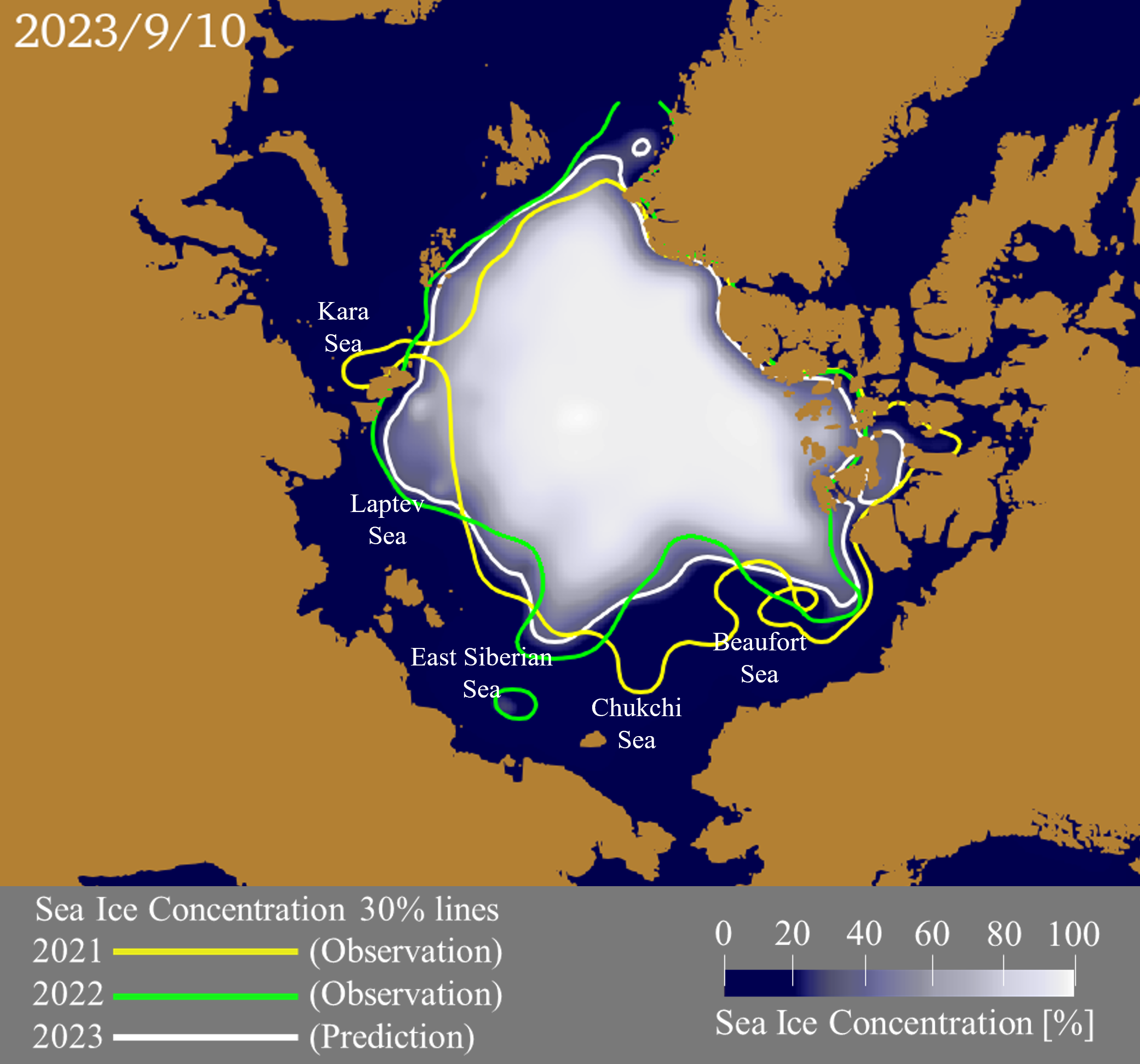
- Minimum ice extent will be about 4.52 million square kilometers in September. This is slightly smaller than in 2021 and 2022.
- The Northern Sea Route will open around August 15, and the Canadian side except for Canadian archipelago will open around July 26.
- Sea ice will remain on the Canadian archipelago side of the Beaufort Sea.
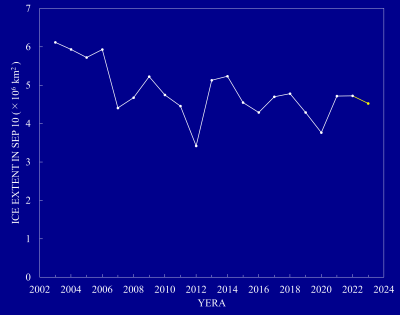
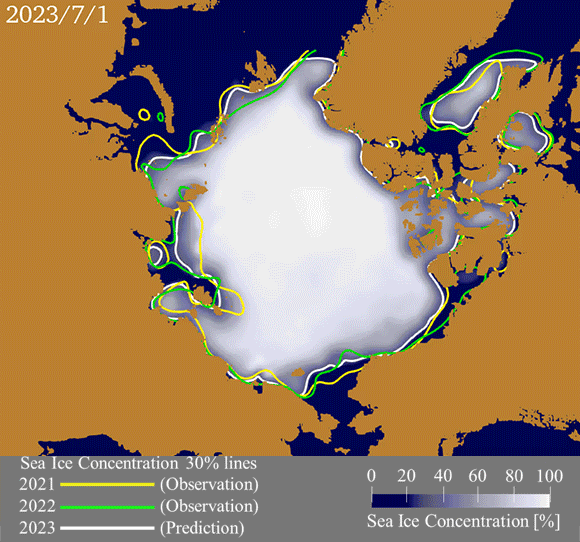
The white line indicates the ice edge for 2023 and the colored lines for 2021 and 2022.
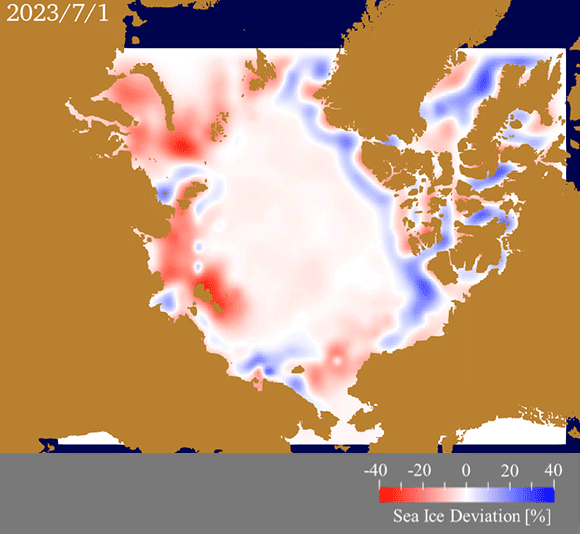
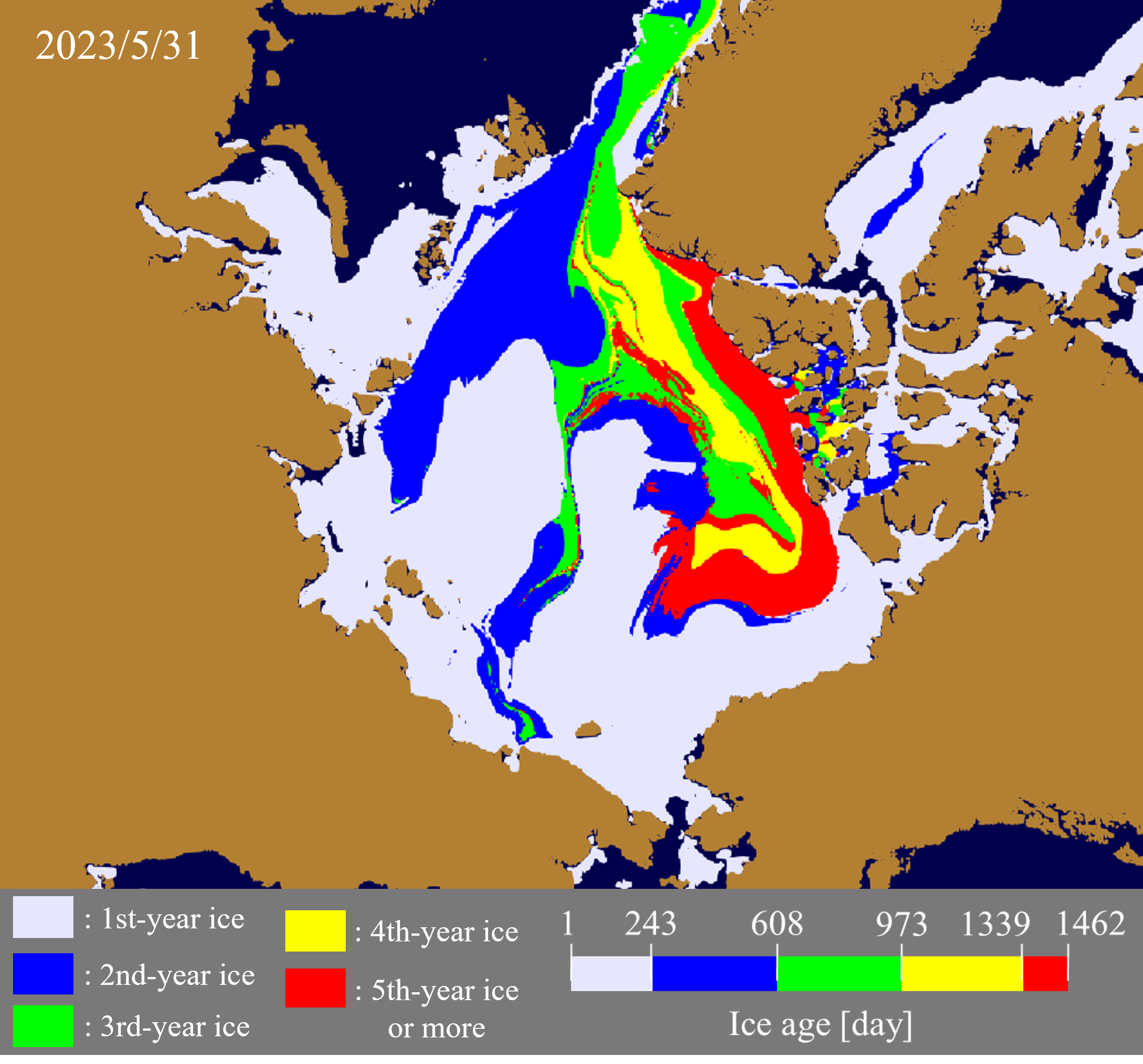
The Arctic sea ice extent on September 10, when the sea ice minimum will be about 4.52 million square kilometers. This is about 6% smaller than in 2021 and 2022.
Sea ice along the Russian coast will retreat at about the same pace as last year. On the Canadian side, sea ice extent will be much smaller than 2021, when more sea ice remained in the Beaufort Sea. The speed of the retreat is expected to be slightly faster than last year.
Russian side
Both the timing and the distribution of sea ice extent in the East Siberian Sea are similar to 2021 and 2022 until mid-August. After that, sea ice in that area will retreat earlier than 2021 and 2022, and the minimum distribution will be similar to 2022. Sea ice extent in the Kara Sea and the Laptev Sea will retreat almost the same as in 2022. Compared to the recent 20-year average, sea ice will retreat later than usual in the East Siberian Sea and earlier in the Kara Sea and the Laptev Sea. The Northern Sea Route will open around August 15.
Canadian side
Sea ice in the Chukchi Sea and the Beaufort Sea will retreat at about the same time in 2021 and 2022. Sea routes of the Canadian side will open around July 26. Sea ice will remain on the Canadian archipelago side of the Beaufort Sea, but not as much as in 2021 and 2022. This is because the extent of old ice is smaller than in 2021 and 2022.
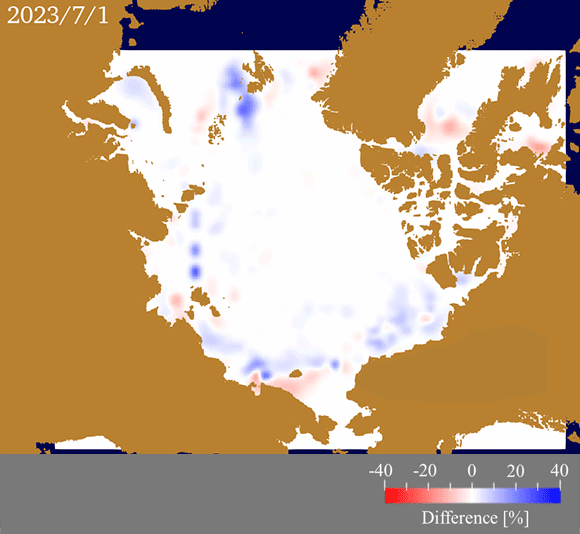
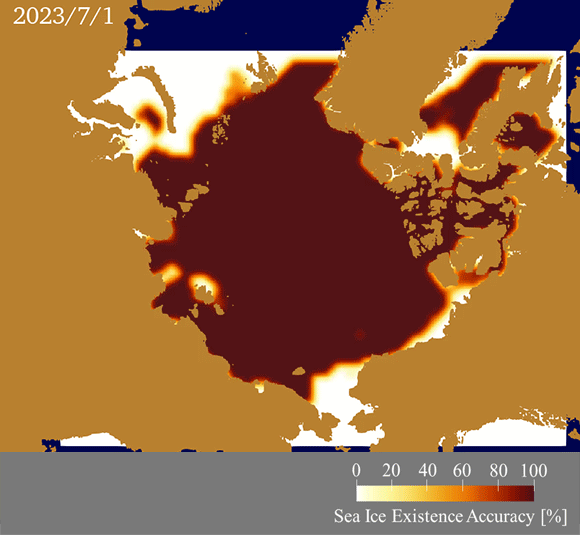
The prediction was performed using three factors: sea ice redistribution from winter to spring, sea ice age, and mean divergence of sea ice. The sea ice redistribution was determined from the sea ice movement from December 1 to May 31, and the sea ice age and mean divergence of sea ice were estimated by the backward tracking of sea ice up to four years from May 31. In addition, by using the mean sea ice drift velocity since May over the past four years, effects of sea ice transport from June 1 to the prediction date was considered.
Figure 6 shows the difference from the prediction of the First report. Blue indicates the result of the Second report is higher than the First report, and red indicates the First report is higher. Overall, the Second report shows a higher concentration, especially in the Beaufort Sea, East Siberian Sea, and Laptev Sea, where the sea ice concentration will be about 20% higher. This indicates that more sea ice remains in the Second report than in the First report.
Figure 7 overlays the sea ice distribution predicted by the following five different parameters (1) to (5). The darker the color, the more methods were used to predict the presence of sea ice. In the Beaufort Sea, there is more variation among the methods than in other areas, which means that the predictions are less reliable.
(1) sea ice redistribution from winter to spring
(2) sea ice redistribution from winter to spring and sea ice age in spring
(3) sea ice redistribution from winter to spring, sea ice age in spring, and mean divergence of sea ice
(4) sea ice redistribution from winter to spring and sea ice age in spring (considering movement up to summer)
(5) sea ice redistribution from winter to spring, sea ice age in spring (considering movement up to summer), and mean divergence of sea ice (considering movement up to summer)
Please refer to the “Parameters used for prediction” in the 2023 First report complement for the reliability of each prediction.
Record high temperatures have been observed in Siberia since early June. Our prediction does not consider the effect of anomalous temperatures, so there is a possibility that the sea ice on the Russian side will retreat earlier and to a greater extent than predicted due to the effects of these high temperatures.
(Reference)
CNN (https://edition.cnn.com/2023/06/08/asia/heat-wave-siberia-climate-intl/index.html )
Daily prediction data can be also downloaded here and daily sea ice age distribution data can be downloaded here .
You can also check the daily forecast and sea ice age data (daily and yearly) on Arctic Data archive System (ADS) at National Institute of Polar Research.
If you have any questions about satellite monitoring of the Arctic Ocean, sea ice forecasting, or the forecasting methods used here, please contact the Arctic Sea Ice Information Center(sea_ice@nipr.ac.jp)
The sea ice forecast and its basic research were started in GRENE, continued to ArCS Project, and has been conducted in ArCS II Project since 2020.


